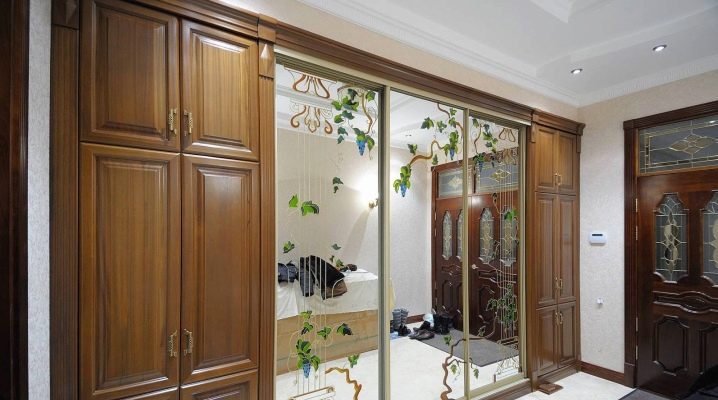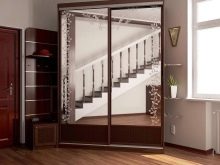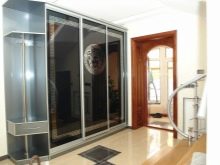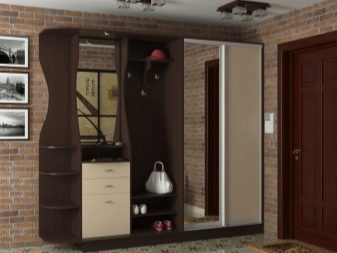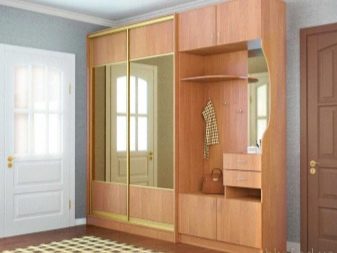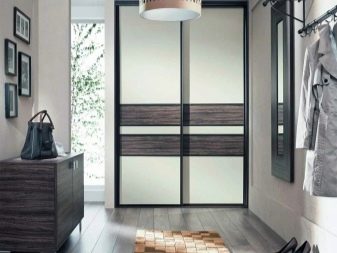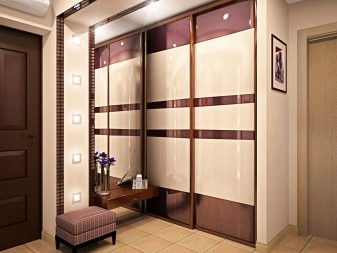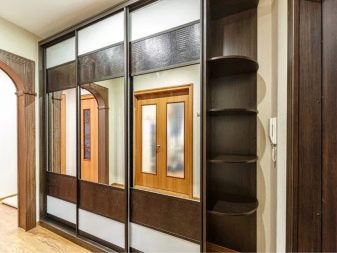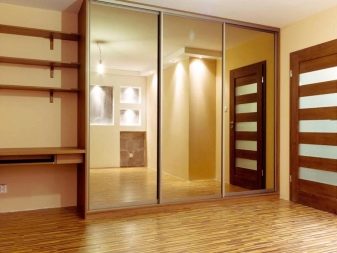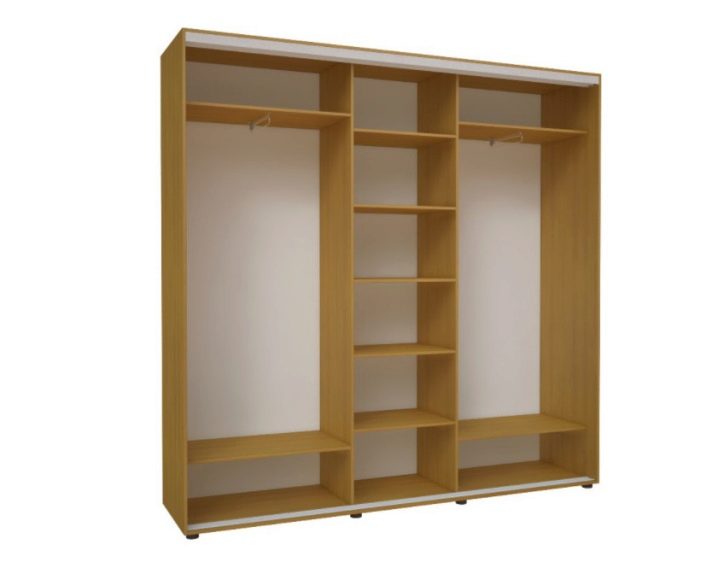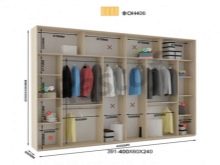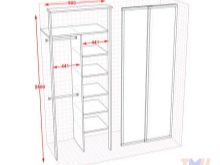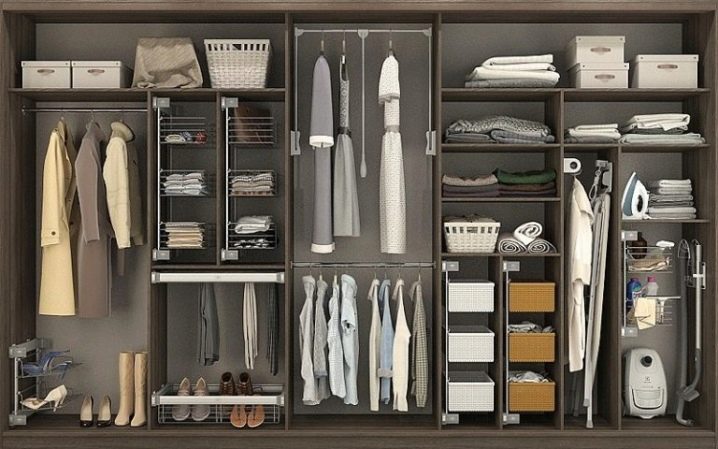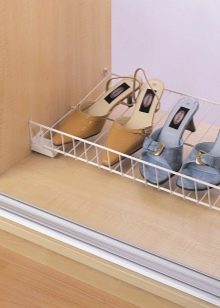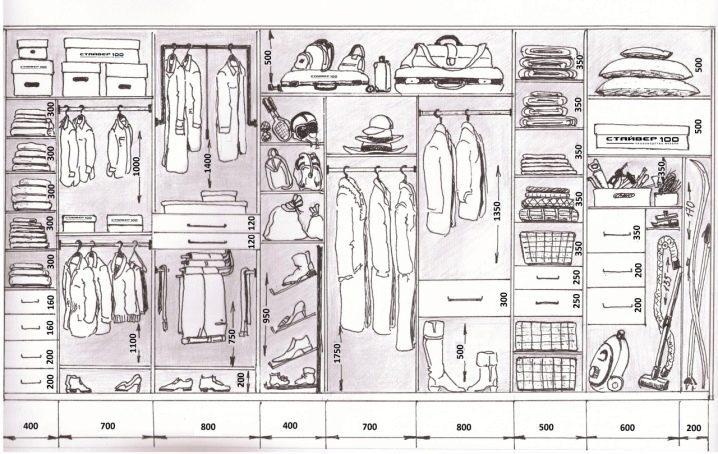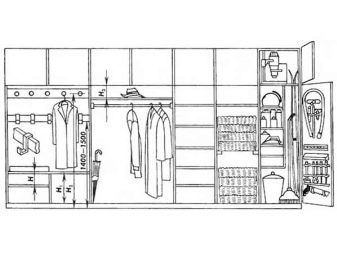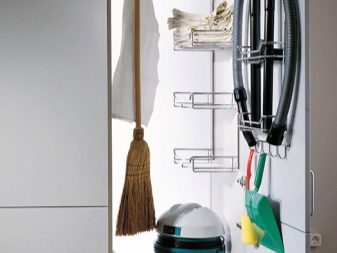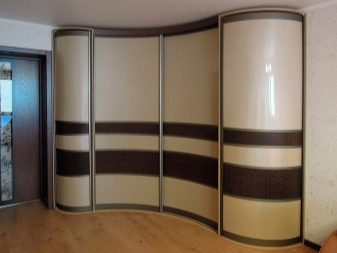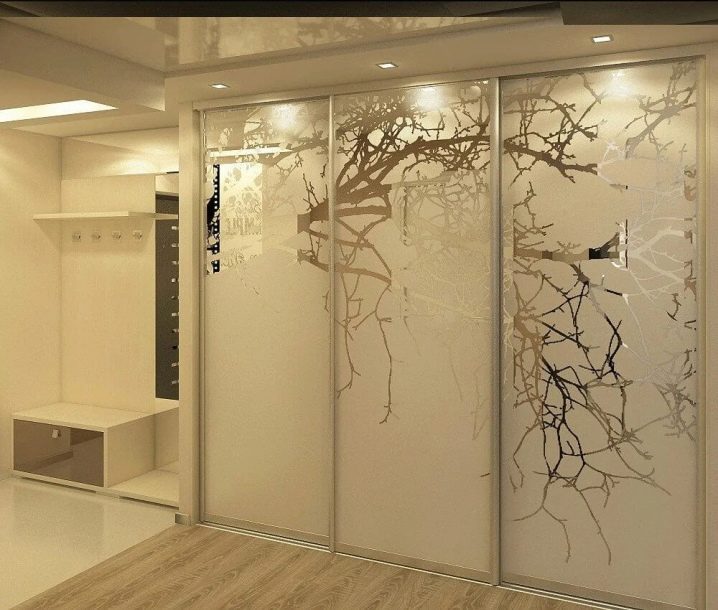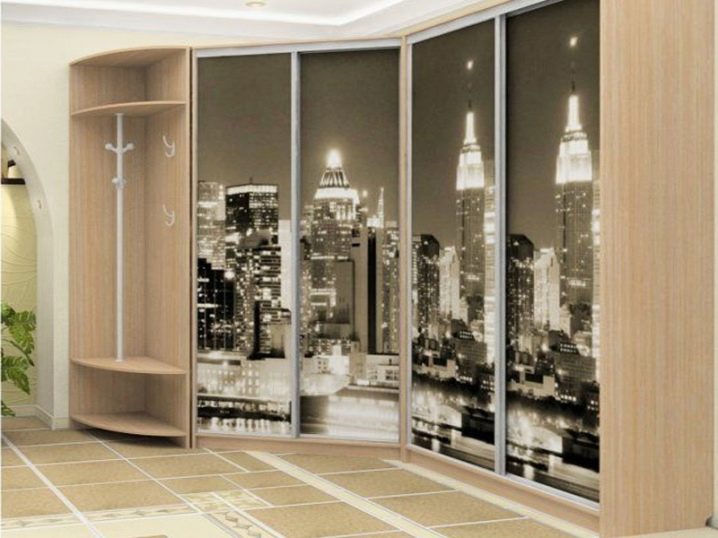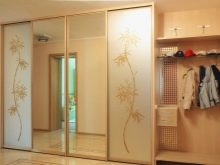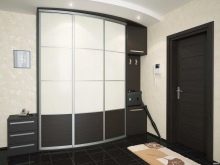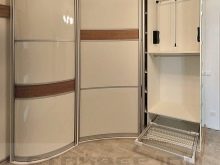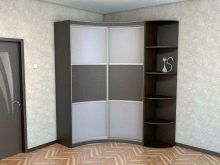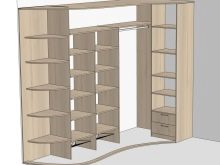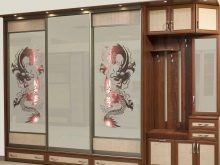Sliding wardrobes 60 cm deep in the hallway
Sliding wardrobes in Russia appeared no more than 30 years ago, and it is already difficult to imagine how we lived without them before. Built right up to the ceiling, they make the most of the usable area. The doors do not take up space in front of them when swinging open, but simply slide to the side. One such closet in the corridor can replace a hanger, a shelf for hats, boxes for small things, gloves, umbrellas. Products are often endowed with a shoe rack, and if you order a mirrored door, except for a cabinet, you can not install anything else in the hallway.
Peculiarities
Back in Soviet times, according to GOST 13025.11 1985, the depth standard for cabinets was adopted - 60 cm. In all respects, this size was considered the most convenient. Even fur coats had enough space in the closet on hangers. The thickness of the doors and the back wall were insignificant, in reality, the depth of the structure was 56-57 cm.
With the invention of wardrobes with sliding doors, the situation has changed. Even if the built-in wardrobe does not have a back wall, the door system takes 8-10 cm, leaving 50-52 cm for the actual depth of the wardrobe. With this size, large things can, of course, be stored on a hanger, but moving doors will constantly touch them. The comfortable depth of the wardrobe in modern conditions should be from 65 to 80 cm.
However, in small hallways, structures are found much smaller than 60 cm.
Rails for hangers in them are not installed horizontally, but perpendicular to the cabinet. Due to the small size, the rods are often mounted in pairs, at the same height, or one of them is raised to the ceiling, and a pantograph is used for operation. Models with a depth of 60 cm can be dispensed with a horizontal bar, but at the request of the owners, they can be equipped with a perpendicular holder.
Varieties
Before installing a wardrobe in the hallway, they find a suitable place for it. Based on the available space, choose a type of product. If it is a niche, the structure will be built-in, in the corner - radius or corner. So, what are the types of cabinets.
-
Built in. The cabinet is built in a niche or in a wall-to-wall space. It does not require its own walls, floor and ceiling - rods and shelves can be attached to the walls of the room.
-
Partially embedded. The structure is located along the wall, resting on one side of the corner. The missing sidewall and doors are being erected for her. Internal filling can be attached to the walls of the room and to the sidewall.
- Corpus. The cabinet has a floor, ceiling and walls. It can be moved and even transported. Manufacturers offer a wide range of such products. But if you make a custom-made model, it will optimally fit into the hallway space allocated for it.
Internal filling
Since the wardrobe is in the hallway, it will be filled with outerwear and shoes. Traditionally, shoes are placed at the bottom of the structure, hats are on the top shelf, the largest middle compartment is reserved for clothes. If the cabinet is built under the ceiling, it also contains mezzanine sections. Do not forget about the hooks for umbrellas and bags.
Barbell
In a model with a depth of 60 cm, the hanger bar often takes a horizontal position, this is a classic version. Long constructions contain 2-3 similar sections. They can be located next to or through a section with shelves, located in two tiers at once, using the pantograph system.
Shoe rack
It is best to store shoes in separate sections in mesh drawers or on similar shelves. This gives her the opportunity to ventilate and be clearly visible.
Shelves, drawers
Compartments with shelves can alternate with drawers. Shelves are needed for hats, bags, clothes. Baskets and boxes with shoes and other fillings are placed on them. Scarves, gloves, shoe and clothing care products are stored in the boxes.
Other branches
Large wardrobes in the corridor, in addition to their direct purpose, are used to store bulky items that have no place in living rooms. A custom-made product can immediately provide a technical compartment for a vacuum cleaner, plumbing tools, an ironing board. Sports equipment, folding chairs, suitcases and other non-standard items are stored in cabinets of this type.
Design options
In addition to the rectangular shape, the cabinets in the hallway can be angular, radius, and the doors move not only in a circle, but also in a wave. Just the latter option often has a depth of 60 cm. But the variety of design lies not so much in the forms as in the appearance of the facades of the models, but they are determined by the material from which the door leaves are made.
MDF, chipboard
The door can contain a monolithic sheet of one color, enclosed in a frame. But more often than not, it is divided into fragments. Surfaces of a contrasting shade are inserted into the metal profile.
This technique diversifies the design of the cabinets. In addition, a door leaf made of this material can be matte or glossy, have the texture of any type of wood, leather or stone.
Glass
Cabinet doors are made of toughened impact-resistant glass. It is difficult to break them, but if this happens, the glass cracks with a cobweb and remains on the film, not giving sharp chips. The surface of the structures is glossy, matte, colored, combined. Glass can contain a film with a picture, but in more expensive versions, the image is applied by sandblasting.
Mirror
The hallway is reflected in the mirrored doors, and from this it looks twice as large. If you put at least one mirrored door in the cabinet, its functionality will increase, and there will be no need to look for a place for a wall mirror. Drawings made in different ways look beautiful on reflective and matte surfaces.
Photo printing
With the help of polymer paints, an image is applied to the surface of the door leaves. It is covered with a special layer to protect it from external influences.
Selection Tips
Before ordering a wardrobe, you should give it a place and decide on the dimensions. Then find out what it should contain. Based on these two components, you can understand what kind of filling will be necessary.
When choosing a model, you should take into account its appearance. The product should correspond to the style of the hallway, fall into its color scheme. In a small room, it is better to purchase a wardrobe with glossy or mirrored surfaces.
When ordering a structure, one should not save on the door movement system, poor-quality mechanisms complicate operation.
